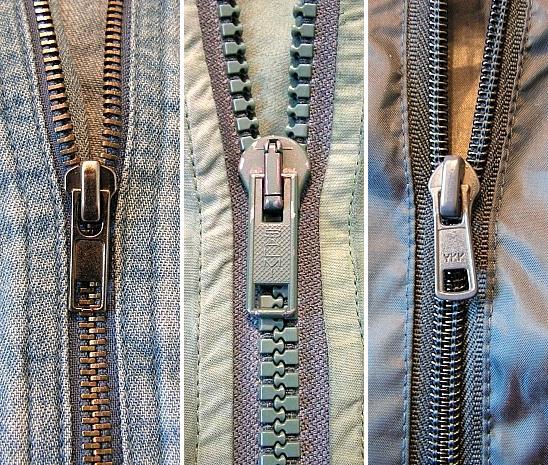Zips. Humble little things that have been keeping us high and dry since 1890, when Whitcomb L. Judson patented the first modern zipper. Judson was a prolific inventor, but his ‘chain-lock fastener’ remains his most-recognised achievement, and the basis for the zips we use today.
On the face of it there’s little to distinguish one zip from another. But what about when your clothing needs to stand up to dangerous situations? You can’t fight a fire with your flies undone. The fastenings on many worker’s clothes need to keep things together in a wide range of conditions.
How do you fireproof a zipper?
The cheapest solution is to use brass or oxidised brass for the zip clasp and teeth. Being a copper alloy, brass creates no sparks and is useful for situations where static build-up is dangerous. Oxidising the brass increases its protective quality by reacting copper molecules with oxygen, thereby creating an outer layer that prevents further corrosion.
Cheap doesn’t mean cheerful however, especially where fatal conditions are concerned. Brass has a relatively low melting point of 900 – 940°C; a candle burns at 1000°C. For working situations where trustworthy protection is needed, overalls held together using fully flame-resistant thread and fastenings are needed.
Hello Nomex
Step in Nomex, the original flame-resistant material. Created by DuPont forty years ago, Nomex continues to be the industry standard for flameproof clothing. Unlike flame-retardant treatments like Pyrovatex which add protective qualities to extant materials, Nomex fibres are flameproof in themselves. Using natural cellulose from wood, Nomex manufacture ‘aramids‘ (aromatic polyamide) fibres.
The molecules in aramid polymers are built along a horizontal axis and are therefore held together by extremely strong amide bonds. It’s these bonds that Nomex exploits for fire-resistance: when set alight the fibres carbonise and expand to form a protective layer. Another synthetic fireproof material, Lenzing FR, uses polyamide chains in the same way.
Nomex is coloured using pigments and can be manufactured in sheet or fabric form. This means the material can be manipulated into flameproof stitching, fabric and zips. It’s lightweight and tear-resistant, and because the flame-resistant element of the material exists in the material’s fibre itself, the flameproof, anti-static nature of Nomex cannot be washed away or eroded.
It should be cleaned in a certain way, however. Nomex is subjected to five-second flame tests and will not melt, drip or burn; wearers can be subjected to intense heat for 35% longer without suffering second-degree burns. Certain forms of the material are resistant to electric arcs, too.
There you have it: flameproof zips.
- You may also like: Fire retardant material focus: NOMEX
Photo Credit:
Zips – By Rabensteiner (Own work) [Public domain], via Wikimedia Commons
Zipper – by Petras Gagilas via Flickr under CC license 2.0



